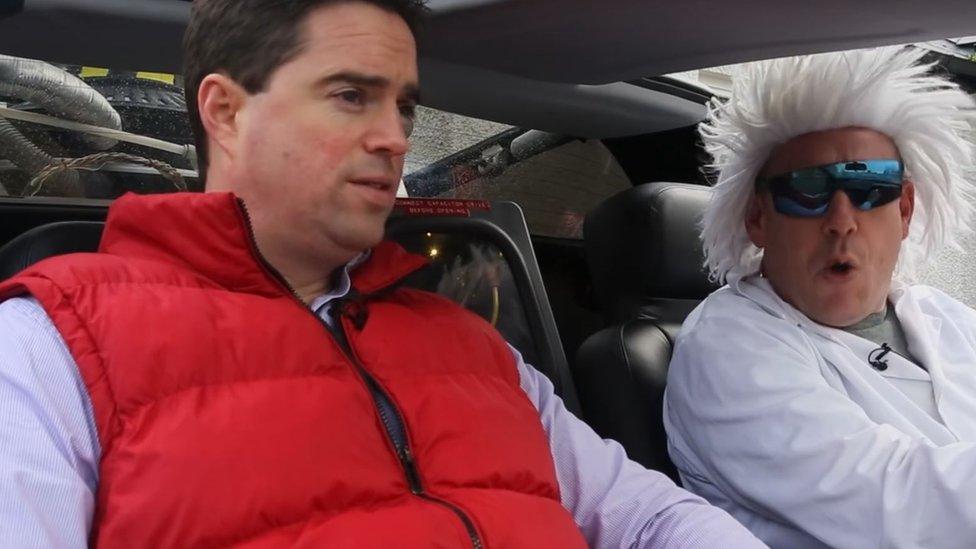Irish election: Boundary changes pose tough challenge for election candidates
- Published
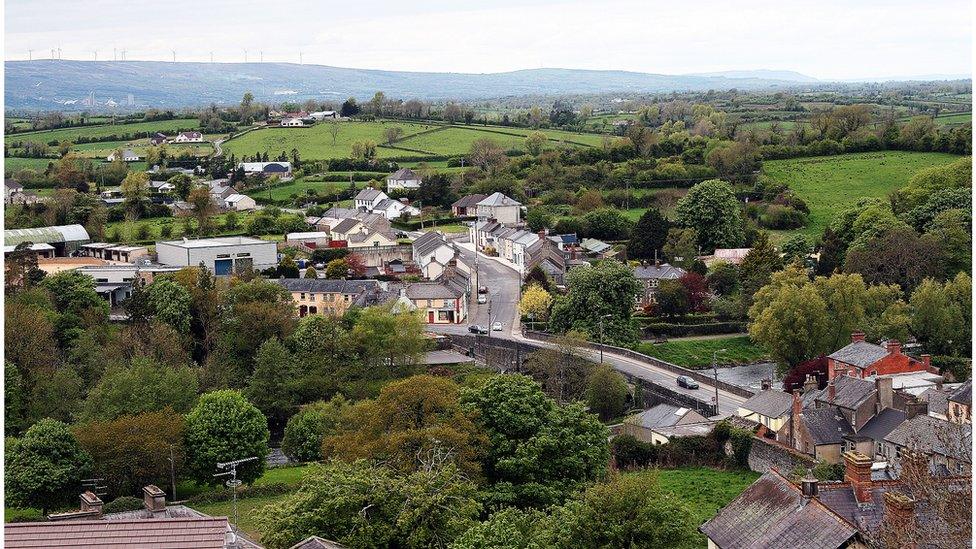
A town divided: Boundary changes cutting through Belturbet in County Cavan are causing confusion for voters
A new landscape to canvas and new faces to get familiar with, BBC News NI examines significant changes to the Republic of Ireland's electoral map.
Irish parliament constituencies have changed in size and shape since the last general election, causing a headache for voters and candidates.
In 2012, the Constituency Commission recommended eight fewer TDs (members of parliament) from 166 to 158.
It also wanted the number of constituencies reduced from 43 to 40.
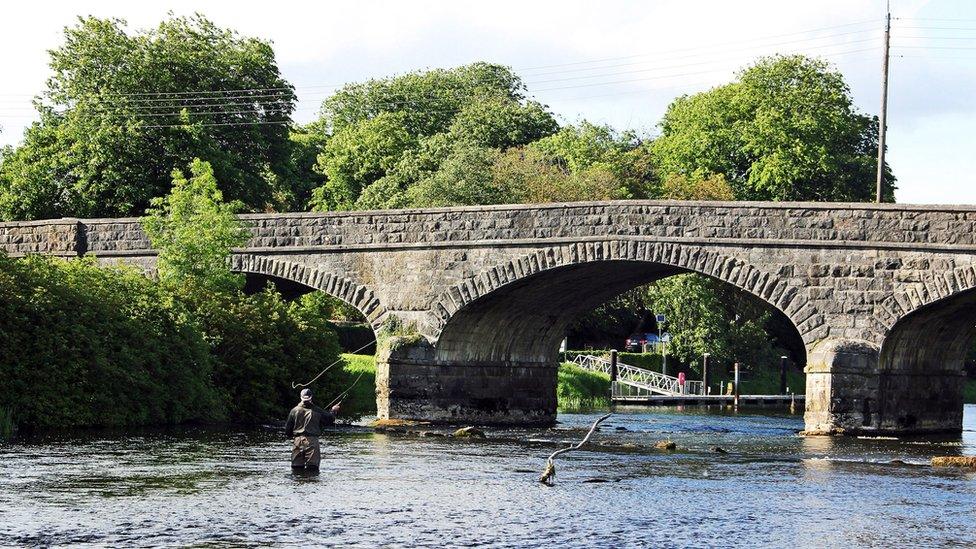
In the border town of Belturbet in County Cavan, boundary changes run too close for some, cutting across a bridge in the town.
One side is Sligo-Leitrim, the other, Cavan-Monaghan.
'Radical'
Large chunks of electoral areas like the 13,183 population of west Cavan, have suddenly found themselves in new ground.
"People feel completely ripped apart," said Daniel Downey, a community development worker.
"There are only a small amount of votes in Belturbet and I suppose voters feel that candidates just won't come to them.
"People have given up on the idea that the system works for democratic representation."
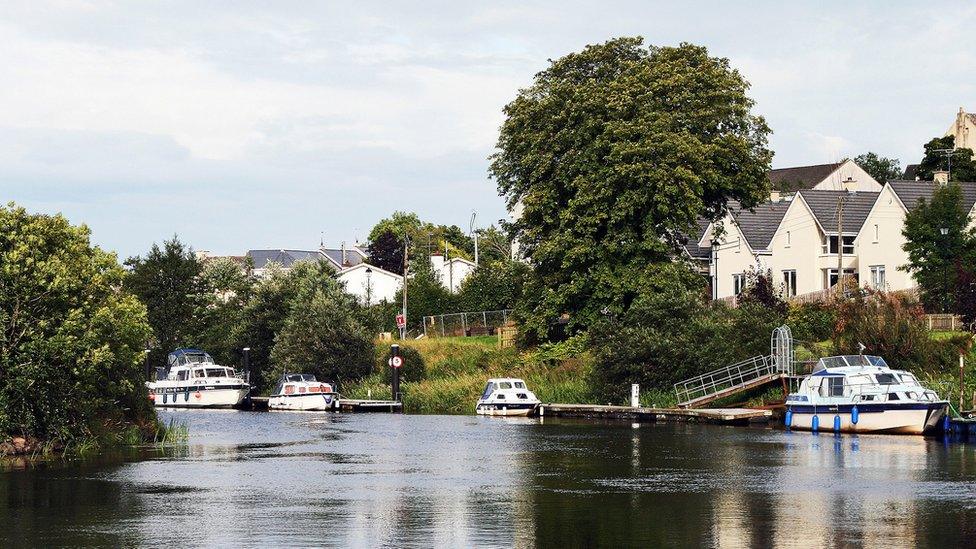
The River Erne flows through Belturbet and a bridge now acts as a boundary line splitting the border town into two separate constituencies
Towns were merged into larger constituencies or split up into smaller ones.
Irish Prime Minister Enda Kenny has described the changes as "radical".
Many voters in those smaller towns have said they feel swallowed up and voiceless in the move to larger constituencies.
'Confusion'
West Cavan was previously part of the Cavan-Monaghan constituency but has now moved to the newly enlarged Sligo-Leitrim.
It takes in four counties, with four seats on offer for 18 candidates.
It has also captured parts of south Donegal, taking with it thousands of voters.
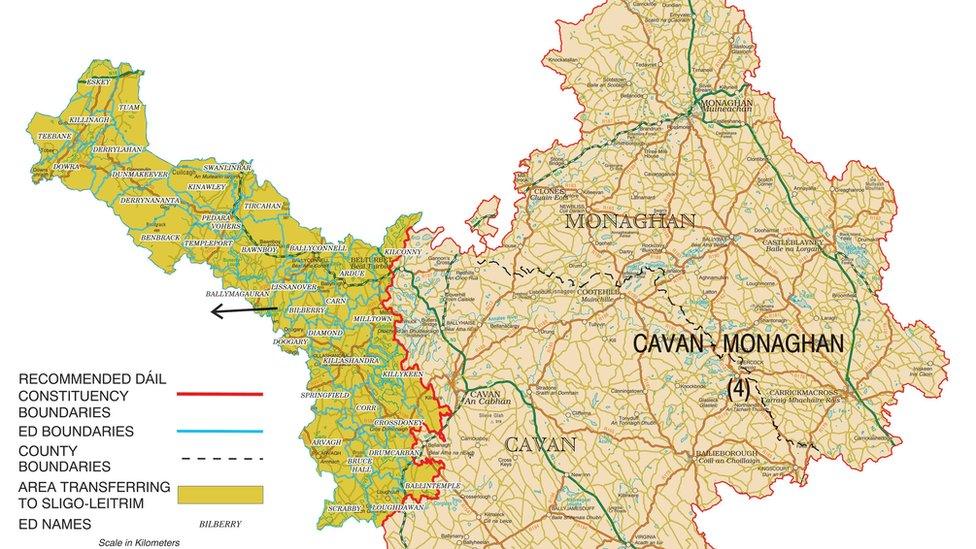
The Cavan Monaghan constituency has lost a seat in the boundary changes, reducing it from a five seater to a four
"When your town has two thirds ripped into another constituency and you're lumped with a giant constituency of Sligo-Leitrim, it leaves a sense of frustration and total resignation," said Mr Downey.
Former Belturbet town councillor Liz McDermott predicts voter turnout in west Cavan will be low on Friday.
"The boundary runs so close, people don't even know who to vote for. It means people just won't turn up.
"West Cavan, our hinterland, has been completely cut off. People are asking me 'who are these candidates for Sligo-Leitrim?'"
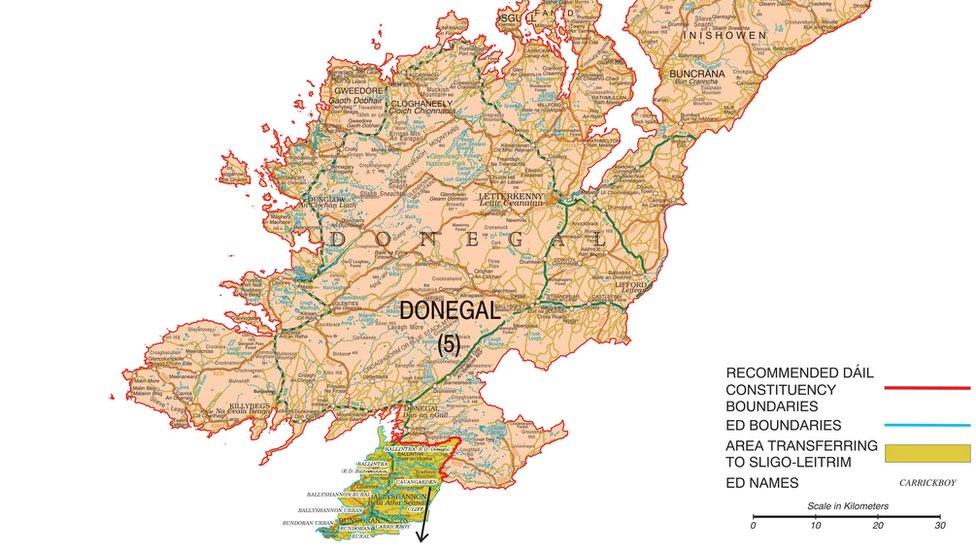
The boundary changes introduced to reflect population changes after the 2011 Irish census have seen Donegal losing a seat in the shake up
"They don't know them. It's a disaster and it's caused confusion."
But Adrian Kavanagh, a political geographer at Maynooth University in County Kildare, argues that this unfamiliarity of candidates "is one of the good things to come from election posters".
He added: "They can alert you to the fact that an election boundary change has impacted your area.
"You'd have people saying 'hold on a minute, I haven't seen these candidates before'. It gives you some sort of an idea of who they are."
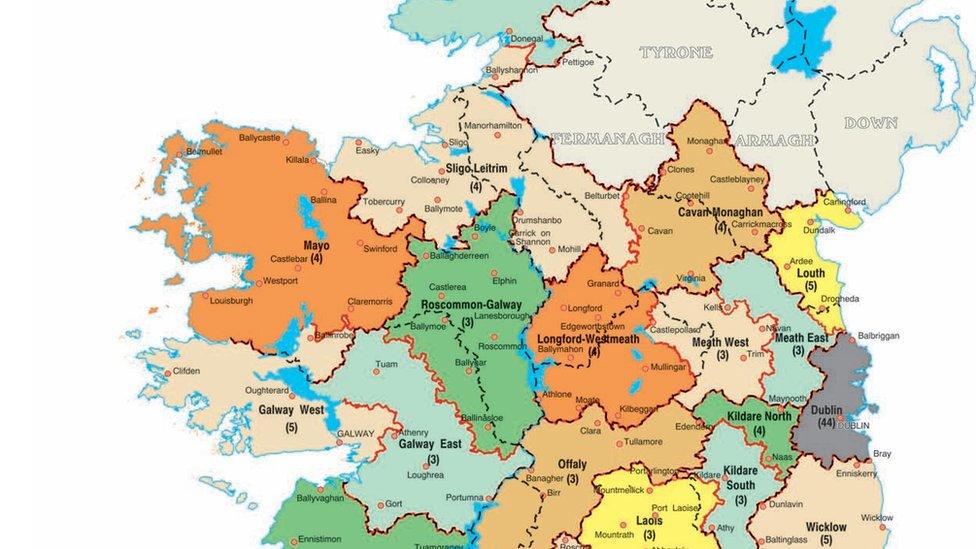
Portions of south Donegal, west Cavan, and south Leitrim have moved into the newly-enlarged Sligo Leitrim constituency
Voters go to the polls on Friday with indications that no party will come close to getting an overall majority.
And with a radical shake up of boundary changes, it has made the outcome of this general election even more difficult to predict than ever before.

Ireland's political choice
Irish politics has long been dominated by two parties, Fine Gael and Fianna Fáil, formed from the aftermath of a bitter 1922-23 civil war, fought over a 1921 treaty with Britain that partitioned Ireland
The Labour Party has served in coalition governments with both - but is seeking re-election to government with Fine Gael
If the present Fine Gael-Labour government is not returned, the possible alternatives would all be historic in Irish politics
Opinion polls suggest Fine Gael and Fianna Fáil could have enough support between them to form a coalition - but both centre-right parties are sworn political opponents
Leftist Sinn Féin says it will not enter a coalition unless it is the largest partner
Smaller parties across the political spectrum and independent candidates are expected to win more seats and could also influence the shape of the next government
These include the Anti-Austerity Alliance, People Before Profit, the Social Democrats, the Greens, Renua and the Independent Alliance
Ireland's system of proportional representation and manual counting means the final outcome could take some time, with counting to start on Saturday
- Published31 January 2016
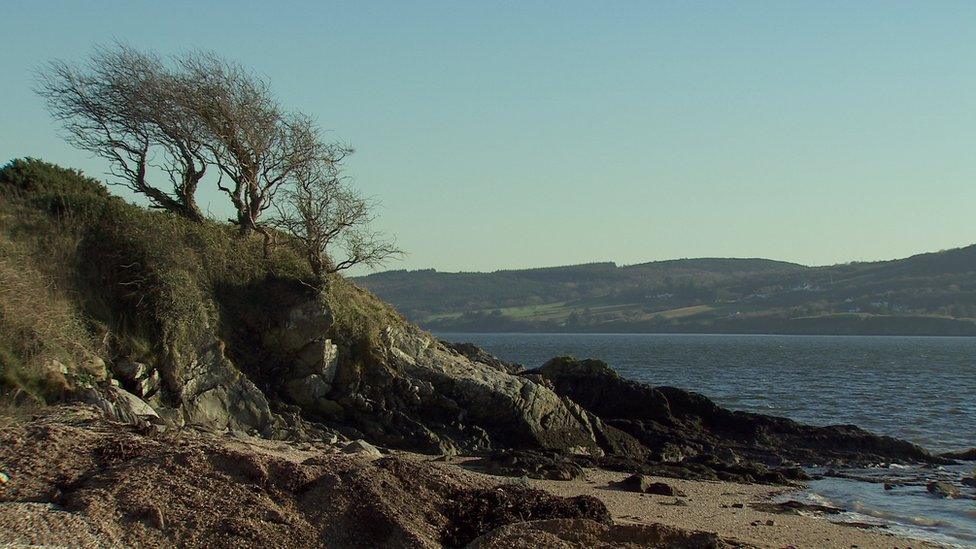
- Published22 February 2016
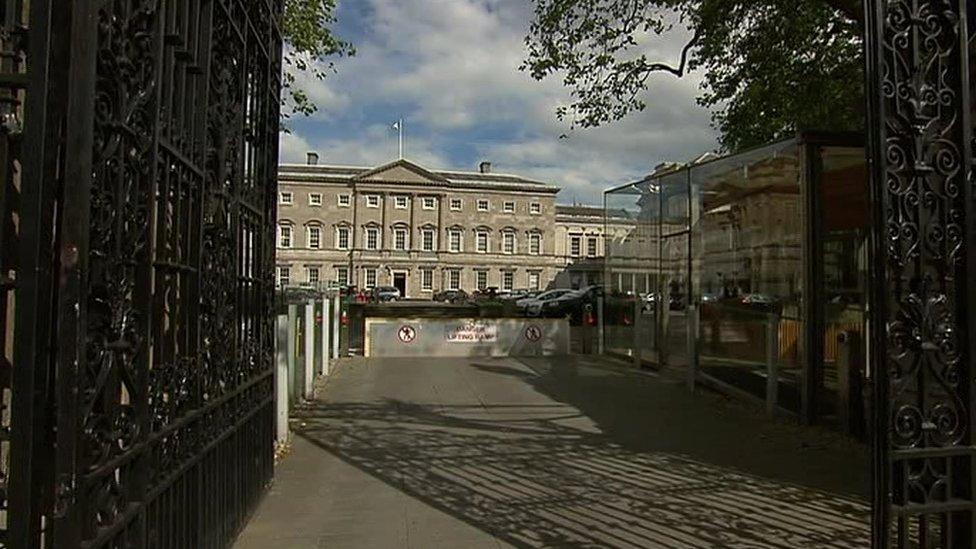
- Published24 February 2016
